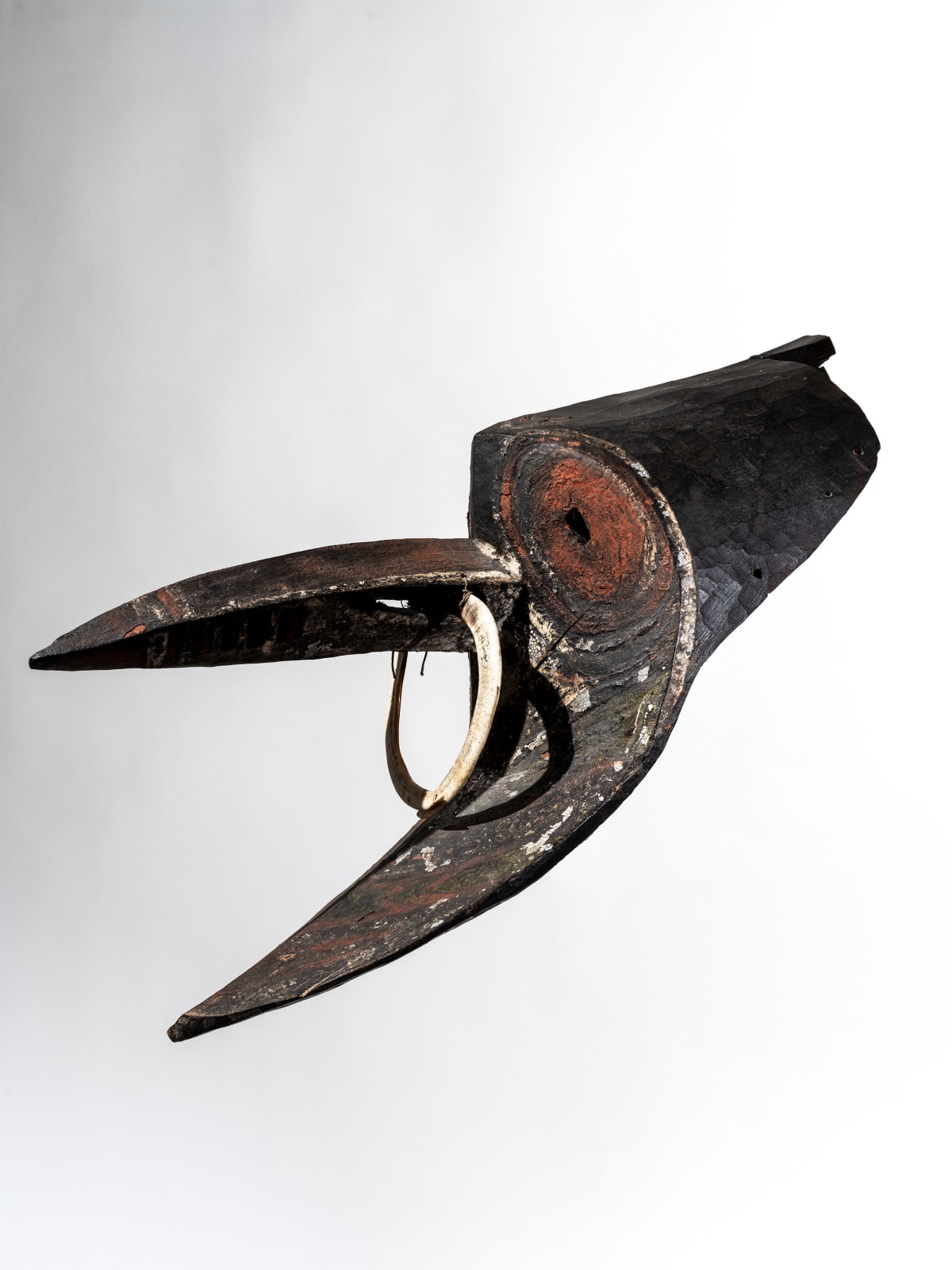Anonymous artist
Barak Mask
Wood, boar tusks
Origin: Papua New Guinea
Origin: Papua New Guinea
height 50 cm
height 19 3/4 in
height 19 3/4 in
Copyright Duende Art Projects
Photo: Valentin Clavairolles
Further images
Papua’s mighty Sepik River might be described as the Nile of Oceania. When speaking about the art of the Sepik River, we are dealing with significantly more than just one...
Papua’s mighty Sepik River might be described as the Nile of Oceania. When speaking about the art of the Sepik River, we are dealing with significantly more than just one river or one group of people. At least 30 large tributaries feed into the Sepik and numerous different groups live along these tributaries, as well as on the plains and in the hinterlands of the Sepik Valley. Yet as diverse as they may be, these people possess a coherent, generally homogenous corpus of artistic styles that have intrigued and delighted collectors and scholars ever since the first exploration of the Sepik River by Otto Fisch in 1885. Amongst the people living on the outer edge of the Lower Sepik towards the Boiken, the unique masks of the Mambe have long been celebrated by art lovers. With their long pointed nose, these wondrous masks have often been called ‘mosquito masks’. In reality this iconographic element is a direct reference to a mythical male spirit called barak (also spelled as parak or brag). This barak spirit was closely involved in the initiation ceremonies of the young-men-to-be and in hunting. As such, the barak was thought to reveal the game to the hunter while concealing it from strangers. The original distribution area of this special mask type is that of the inland Mambe. The mask has been found, however, all along the coast from the mouth of the Sepik River in the east to Kairiru Island in the west. Especially around Cape Turubu, which bulges out from New Guinea’s north coast southeast of Wewak going towards the mouth of the Sepik River, a good number of these masks have been collected. This mask was once worn by dancer whose plant fiber costume completely concealed him. What it makes this mask stand out is the fact that it retains most of its original painting, as well as pair of boar’s tusks which pierce its nose. A corona of black cassowary feathers would once have graced the masks’ forehead. The concave facial plain, with its elongated projecting chin, and the manner the elongated pointed nose projects outwards create a fabulous supernatural ensemble that continues to captivate whoever gets in front of this mask.
Provenance
Eddy Hof, The Hague, 1986
Cees Van Strien Collection
By descent through family, 2022







